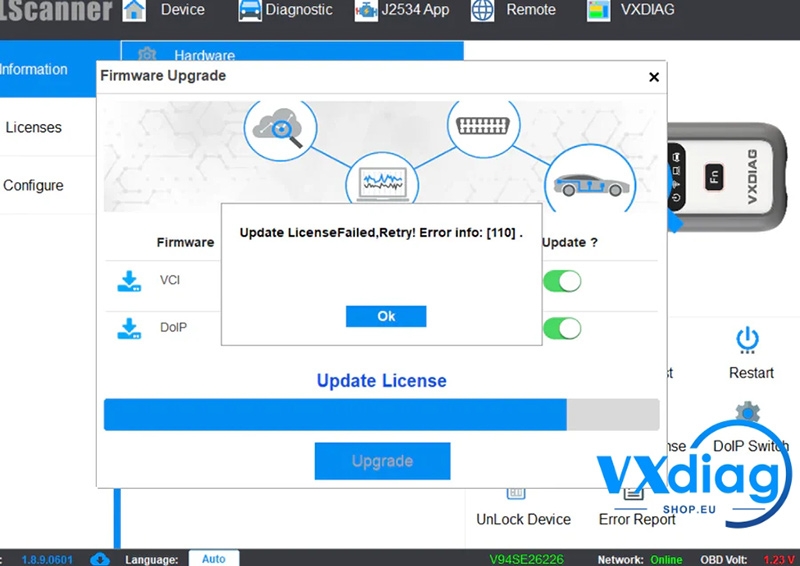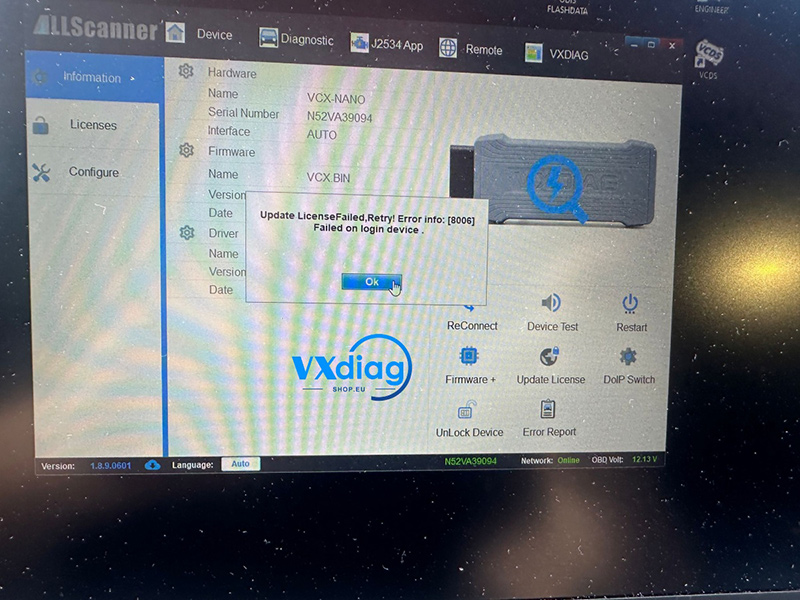The DoIP (Diagnostics over Internet Protocol) standard has transformed modern vehicle diagnostics by leveraging Ethernet and IP protocols. Depending on the application, DoIP can be implemented in two ways—Option 1 (standard) and Option 2 (high-bandwidth). Each option serves different diagnostic needs, from routine fault code reading to complex ECU programming.
Option 1: Standard DoIP Implementation
Overview:
Option 1 is the traditional DoIP setup, operating over standard Ethernet. It is designed for basic diagnostic tasks that do not require high data transfer rates. This implementation is commonly found in earlier vehicle models or entry-level diagnostic systems.
Applications:
Reading and clearing fault codes
Accessing real-time data streams and sensor data
Performing basic fault diagnosis and simple operations
Device Support:
VXDIAG SE Device: Supports Option 1 with standard Ethernet connections, ideal for general diagnostics.
Other Tools: Devices such as Bthe osch KTS series and the Autel MaxiSys series also use Option 1 for routine diagnostic functions.
Vehicle Applications:
Earlier DoIP-compatible vehicles
Models with less complex diagnostic systems
Option 2: High-Bandwidth DoIP Implementation
Overview:
Option 2 uses high-bandwidth Ethernet (10Gb or higher) and supports advanced diagnostic tasks that require faster data transfer. This implementation is essential for high-end vehicles with complex electronic architectures.
Applications:
ECU programming and configuration
Advanced fault diagnostics
Online software updates for luxury vehicles
Device Support:
VXDIAG PLUS and VXDIAG FD Devices: Support both Option 1 and Option 2, enabling advanced operations such as ECU programming and software updates.
Vehicle Applications:
Premium and luxury brands such as Mercedes-Benz, BMW, Audi, and other high-end models require advanced DoIP features
VXDIAG Devices and DoIP Support
VXDIAG SE Device:
Supports Option 1 only
Handles most daily diagnostic tasks effectively
Compatible with OEM software, which allows advanced functions (including ECU programming) if an online subscription is available
Cost-effective solution for workshops focusing on routine maintenance
VXDIAG PLUS and FD Devices:
Support both Option 1 and Option 2
Provide flexibility for technicians working on both standard and high-end vehicles
Best choice for ECU programming, online updates, and complex fault diagnosis
Advantages of the DoIP Protocol
High Bandwidth: Enables faster ECU programming, large-scale data reading, and online updates compared to traditional K-line and CAN protocols.
Remote Diagnostics: Supports diagnostics over IP networks, allowing remote troubleshooting without requiring a physical connection to the vehicle.
Advanced Features: Beyond basic functions, DoIP handles ECU programming, complex fault diagnostics, and advanced software operations.
Conclusion
The DoIP protocol significantly enhances modern vehicle diagnostics by integrating Ethernet and IP technologies.
Option 1: Best for basic diagnostics such as fault code reading, data streams, and sensor monitoring.
Option 2: Designed for advanced tasks such as ECU programming, software updates, and high-bandwidth operations on luxury vehicles.
Device Recommendations:
VXDIAG SE Device: Practical and cost-effective for everyday diagnostic needs (Option 1).
VXDIAG PLUS and FD Devices: Provide maximum flexibility and support both options, ideal for workshops handling advanced diagnostics and programming in premium vehicles.
By choosing the right DoIP implementation and compatible VXDIAG device, technicians can achieve faster, more accurate, and efficient diagnostics across a wide range of vehicles.



